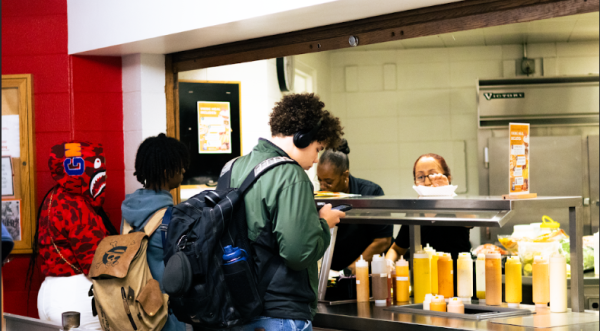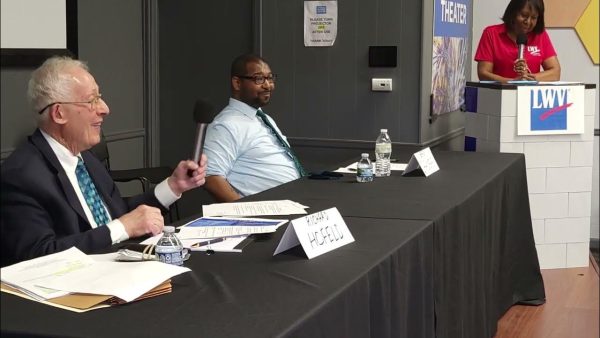Students make a beeline for North
Screams, people sprinting down the path and hands flying are a few of the things witnessed when walking the path during bee season.
Many students, like junior Katelyn Oates, have to walk the path multiple times a day and often fend off the bees. Oates said that the bees here seem like a whole different species.
“I think that the bees on the path were created in a biology class and released,” Oates said. “They’re bigger than regular bees and attack us.”
Junior Demi Jefferson said the bees seem to “come out of nowhere.”
“I’ve seen people walking with one on their backpack, another on their shoulder and another on their head. It’s crazy out there.”
According to Operations Manager Tom Wagner, the pests aren’t different species of bee. In fact, they are not technically bees.
“There are a few different species of pests that people call bees. The most common is the paper wasp and yellow jacket, which we have here that create the problems for humans, yellow jackets being the most aggressive,” Wagner said.
The fear is magnified for the students who are allergic to bees, like junior Sarah Wiener.
“I feel that walking past a garbage can [on the path] is a battle for my life,” Wiener said.
Senior Brittany Henry is also allergic to bees and shares these fears with Wiener.
“I can’t even go to pep rallies because the bees are so bad,” Henry said. “It needs to be fixed.”
There is even a Twitter page dedicated to the havoc the bees wreak on students called ‘HFbees’ also known as ‘ya boy wasp’ featuring photos of students running or swatting the bees.
However, some students say that the bee hype is an overreaction.
“They’re just bees like anywhere else,” sophomore LeMeah Brownlee said. “If you swat at them, they’re going to get mad.”
Wagner says the bees here aren’t any more aggressive than any place that has food.
“They are no worse here than they are anywhere else in the community. Where there is food, there they are. We just provide an abundance of food for them,” Wagner said.
The abundance of sugary drinks make the bee and wasp population worse, he said.
“With the influx of sports drinks being consumed all over the campus, it is a yellow jacket winning lottery ticket, and the large amount of flowers and plant life we have [help] the bees thrive every year,” Wagner said. “We provide them everything they need to flourish.”
Maintenance uses different techniques in attempts to deter these various pests.
“We try to control the population by trapping in certain areas and spraying nests at night when we are aware of them. One thing we have done for years is use mesh garbage cans around campus, that allows us to attract them then spray and control them as they forage on the food in the cans,” Wagner said.





